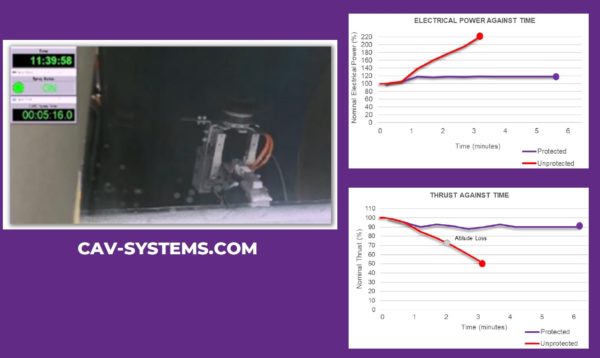

CAV Systems designs an ice protection concept to prevent icing on the rotor blades of a sUAS or drone.
Poor weather conditions can have costly implications for a business and in some instances could even prevent new projects from taking flight.
This is particularly evident in the small unmanned aircraft system (sUAS) or drone sector which has grown at a phenomenal rate over recent years. Traditionally associated with the defence industry and hobbyists, new market applications including the express delivery of food and urgent medical supplies are continuing to emerge. However, this method of transportation does have its drawbacks as flying these platforms in conditions such as freezing fog, even for a short period of time may greatly degrade performance and pose a significant safety hazard.
To address this issue, CAV Systems, the leading supplier of airborne ice protection solutions globally has designed an ice protection concept to prevent icing on the rotor blades of a sUAS or drone.
The system works by enabling Freezing Point Depressant fluid to be evenly distributed to the leading edges of a typical carbon fibre blade and has been successfully trialled on an Octocopter with 18-inch propellers.
To demonstrate the impact on power and performance Icing Wind Tunnel tests on models with and without CAV’s ice protection were also carried out.
On the unprotected model ice accumulated on the blades, which resulted in electrical power consumption doubling, whilst lift generated halved over a period of three minutes. At this point, had the vehicle been out in the field, it would have suffered a catastrophic failure, presenting a considerable safety risk.
Conversely, the test results on the model with ice protection were very different, with lift reducing by just ten per cent and little change to power, thus ensuring the sUAS would reach its destination safely. Another important consideration was the need to keep the weight of the ice protection system to a minimum so as not to reduce the payload.
This was achieved by the CAV engineering team, whose test system including fluid storage, weighed in at less than 2kg, this equates to approximately 20 per cent of the total payload of the test model. A small price to pay to guarantee the safety and integrity of the vehicle and its potentially valuable cargo. It also has significant implications for future developments to ensure safe operations and maintain capacity levels in all weather.
The CAV team are now undertaking further developments on a full platform system, to include fluid storage, motive action for the fluid and general system control and activation, with a view to commencing flight testing in May 2022.
